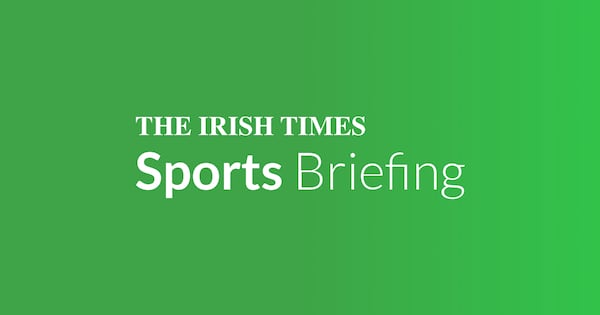Irish racing has always had a casual relationship with attendance figures. When they’re bad, they don’t matter. But when they’re good, big crowds reflect just how popular the old game is, the second-best attended sport in the country and all that. But that casual attitude appears to also extend to interpreting such figures.
Most people’s reading of crowd sizes is that they’re measured in terms of paying customers. Fans are not the same as people who’re paid to be there to do a job or carry out a function. It’s a reasonable assumption. Any full-house sign outside a theatre is hardly about those performing on the stage.
Such assumptions can be misleading, though, and it isn’t just racing. Certain situations, such as the reporting of gate receipts or maybe a tricky planning issue, can tempt most sporting organisations into estimating attendances on the stingy side when it suits. Or steer them towards inflation when it comes to other commercial considerations or just basic vanity.
The reporting of attendances has always been an unnecessarily opaque area in racing. If not exactly sleight of hand, there’s always been a widespread presumption that an expedient trick of statistical light can come into play. Perhaps unsurprisingly, there has always been official unease at any investigation as to how numbers are arrived at, or who gets counted.
READ MORE
But that attitude might be changing. Sunday’s Troytown Chase card in Navan had an official attendance of 4,962. It was slightly down from the previous year’s 5,003. Considering the first day of Navan’s festival was rained off, and a certain football match in Budapest was taking place at the same time, it was an impressive tally.
Ciarán Flynn, general manager at the Horse Racing Ireland-operated (HRI) track, subsequently expanded on the figures, outlining how the total number of paying customers was up, but the number of industry personnel present was down. He said that 500 were on site through Association of Irish Racecourses (AIR) membership compared to 700 the previous year.
To his considerable credit, he noted that paying customers and AIR members there to work, including jockeys, trainers and even assorted media, all got counted in the overall attendance. This is standard practice at HRI’s four tracks, and presumably at every other racecourse around the country.
The helpfully flexible textbook definition of attendance is the number of people present at an event. So, not too many linguistic hoops have to be negotiated to meet the criteria technically. But the idea that public perception of crowd sizes should include counting Willie Mullins or Jack Kennedy is far-fetched.
Who knows if Troy Parrott was included in the final 50,717 attendance at the Aviva Stadium last Thursday night, but if he was, most people would think it artificial. Yes, he was there, thankfully, but he had to be. Counting him as a customer, too, would be a piece of statistical flexibility that wouldn’t wash in the court of public opinion.

Counting industry professionals in attendance is a minimal element in something like the massive 42,138 that showed up for day four of last spring’s Punchestown festival. But for most ordinary days, they probably outnumber those paying in. HRI’s figures showed how non-paying customers made up 14 per cent of last year’s Troytown crowd figure.
Total precision on such matters is impossible. Owners are probably the single most sizeable element at most meetings, and the argument can be made that they’ve paid many times over for their entry and complimentary tickets. But it’s no contradiction to allow for that and point out how too much imprecision serves up a skewed picture of racing’s popular spectator appeal.
HRI’s 2024 statistics record a total attendance last year of 1.242 million. That’s from figures reported by each racecourse. It makes an average crowd size of 3,200. But it’s always been unclear how they are calculated. Tales of complimentary tickets not used but still winding up being counted might be apocryphal, but plenty are happy to believe them.
Earlier this year, at one of the most prestigious fixtures of all, the Irish Derby at the Curragh, an official crowd of 11,200 was reported. It turned out to be an 8 per cent increase on what was termed an “adjusted” 2024 figure of 10,300. But on the day in 2024, a crowd figure of 11,418 was released.
Such a loose approach, given the weight put on these numbers in annual statistical reports, ultimately doesn’t serve the sport well. Racecourses are individual businesses with their own priorities and interests. But it can’t be beyond central authority to expect attendance returns that reflect the reality of who’s going racing.
Racecourses can track precisely who is going through their turnstiles and why. If gate receipts have mostly been a minor financial consideration for some time, the changing nature of media rights, and an uncertain outlook for Britain’s betting shop sector, means many tracks face having to renew their focus on getting people back through the gates.
Transparent reporting of figures we can believe in, and their breakdown, such as Navan’s commendably straightforward approach, will serve better in the long run, not just in terms of statistical accuracy but public confidence in what we’re being told.
Something for the Weekend
Tomorrow’s Punchestown opener has hurdles winner Quinta Do Lago (11.30) lining up in a maiden hurdle. His success at Cork last month was in the first of the Academy series, a concept whose critics include no less than Willie Mullins. Whatever the logic, Jessica Harrington’s three-year-old can use that experience to good effect.
Gordon Elliott’s Cheltenham festival winner Wodhooh is a ratings standout in the Grade Two Ascot Hurdle while Celtic Dino is a progressive type. A value alternative, though, could be the gutsy Nemean Lion (2.40) representing the in-form Kerry Lee.

















